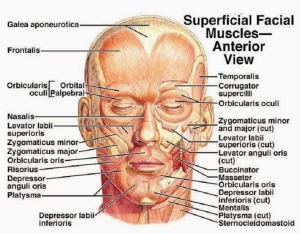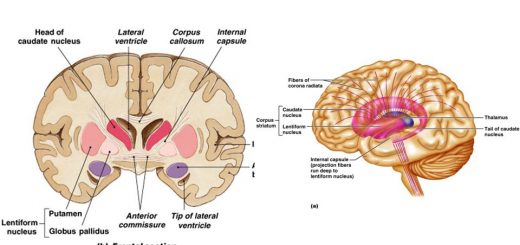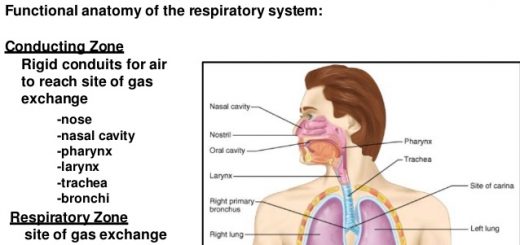Facial muscles function, anatomy, arteries, veins, names and expressions
Facial muscles control the parts of your face, They are important for chewing and making facial expressions, They are also called craniofacial muscles, and they consist of 20 flat skeletal muscles lying underneath the skin of the face and scalp, Most of them originate from the bones or fibrous structures of the skull and radiate to insert on the skin.
Facial muscles
Facial muscles permit a large variety of facial expressions, they are used to show surprise, disgust, anger, fear, and other emotions, they are an important means of nonverbal communication, Facial muscles expression includes frontalis, orbicularis oris, laris oculi, buccinator, and zygomaticus.
Anatomy of the face
Muscles of the face
Under the skin of the face, more than 20 muscles are attached to the bones of the face, as well as to the skin, These muscles are called muscles of facial expression, All the muscles of the face are supplied by the facial nerve.
1. Orbicularis oculi
It is a circular muscle around the orbital opening, It is formed of an orbital part that covers the bone, lacrimal, and palpebral parts that are present in the eyelid.
Its action:
- Orbital part: forced closure of the eyelids (protection).
- Palpebral part: light closure of eyelids (blinking) or during sleep.
- Lacrimal part: dilates the lacrimal sac (to drain tears).
2. Orbicularis oris
It is a circular muscle that surrounds the mouth opening.
Its action:
- It compresses the lips together (kissing).
- This muscle is very important during articulation.
3. Buccinator
It is the muscle of the cheek, It is an accessory muscle of mastication.
Its action: It empties the vestibule of the mouth by compressing the cheek against the teeth, It is pierced by the duct of the parotid gland.
Arteries of the face
- Facial artery.
- Transverse facial artery.
- Infraorbital artery.
- Mental artery.
- Supraorbital and supratrochlear arteries.
- Superficial temporal artery.
Facial artery
- Origin: it arises from the external carotid artery in the neck.
- Course: after passing through the deep structures in the neck, it appears at the lower border of the mandible, just anterior to the masseter where its pulsations can be felt, From this point the facial artery runs upwards and medially in a tortuous course lateral to the angle of the mouth, along the lateral side of the nose and terminates as an angular artery at the medial corner of the eye.
Branches of facial artery in the face
- Inferior labial.
- Superior labial.
- Lateral nasal artery.
- Angular artery.
Veins of the face
The venous drainage of the face is:
1. Anterior facial vein (facial vein)
It commences at the medial angle of the eye as a direct continuation of the angular vein, It lies behind the facial artery, It usually joins the anterior branch of the posterior facial (retromandibular) vein to form the common facial vein that drains into the internal jugular vein.
2. Posterior facial vein (retromandibular vein)
Begins behind the neck of the mandible by the union of the superficial temporal and the maxillary veins, This happens inside the substance of the parotid gland, It passes downwards and divides into anterior and posterior branches, The anterior branch unites with the anterior facial vein to form the common facial vein that finally drains into the internal jugular vein, The posterior branch of the retromandibular vein unites with the posterior auricular vein to form the external jugular vein (superficial to the sternomastoid muscle).
3. External jugular vein
It begins behind the angle of the mandible by the union of:
- Posterior auricular vein.
- Posterior branch of retromandibular vein.
It descends in the superficial fascia of the roof of the posterior triangle. It pierces the deep fascia one inch above the clavicle to terminate in the subclavian vein. The external jugular vein is the only tributary of the subclavian vein.
Tributaries:
- Anterior jugular vein.
- Posterior external jugular vein.
- Suprascapular vein.
- Superficial cervical vein (transverse cervical vein).
Dangerous site of the external jugular vein: 1 inch above the clavicle where it pierces the deep fascia of the roof of the posterior triangle.
Nerve supply of the face
Motor: all the muscles of the face are supplied by the facial nerve, which is the seventh cranial nerve. It gives five terminal branches in the face that supply the facial muscles: theses branches are:
- Temporal,
- Zygomatic,
- Buccal,
- Mandibular,
- Cervical.
Sensory: the trigeminal nerve carries the sensation from the skin of the face, except the skin covers the angle of the mandible which is supplied by the great auricular nerve, The trigeminal nerve divides in the cranial cavity into 3 divisions:
- Ophthalmic gives: supra-orbital, supra-trochlear, lacrimal, infra-trochlear and external nasal.
- Maxillary: gives: infra-orbital, zygomatico-facial and zygomatico-temporal.
- Mandibular: gives: auriculo-temporal, buccal and mental.
You can download Science Online application on Google Play from this link: Science online Apps on Google Play
Skull function, anatomy, structure, views & Criteria of neonatal skull
Cranial cavity anatomy, function, structure, Dural folds, Cavernous sinus & Nerve supply of scalp
Triangles of the neck contents, Structure of Anterior and Posterior triangle of the neck




